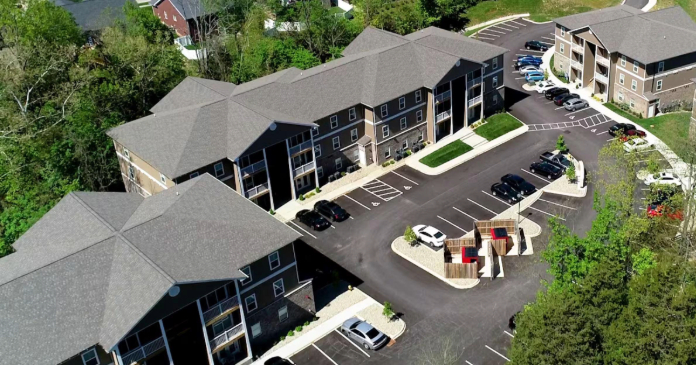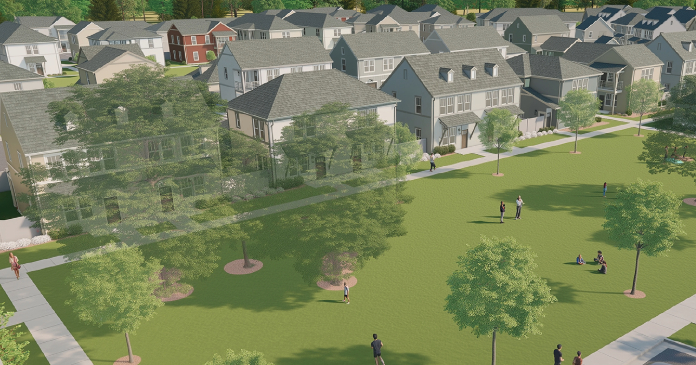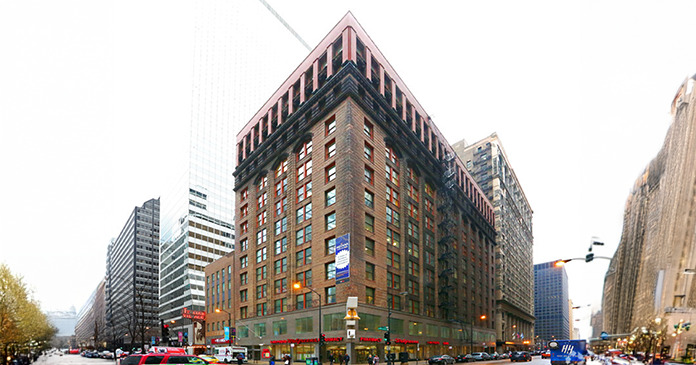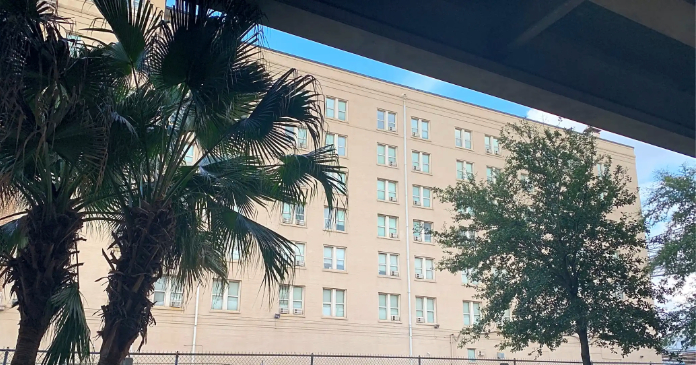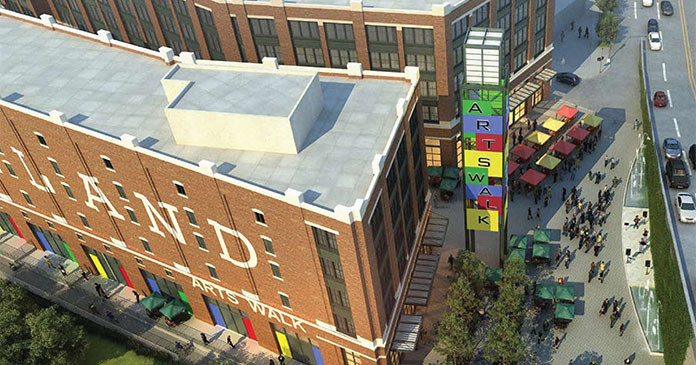
“In many instances universities have incredibly well-located land and a great deal of renter demand generated by their own student body, faculty and staff. But they don’t necessarily have the real estate knowledge. Or, if they do, it’s on a very limited basis, but they can leverage their land to attract a private developer, who’s able to access private capital,” Toby Bozzuto, president of Bozzuto Development Company, said shortly after The Bozzuto Group’s recently-created investment partnership with Pritzker Realty Group joined forces with Abdo Development on a Catholic University of America (CUA) campus revitalization effort.
Universities also benefit from such partnerships because they keep the development off their balance sheets, avoiding increased debt and, subsequently, a reduced debt rating and ability to borrow money. “Anything universities do to add to their debt would hinder their ability to secure money at an attractive price,” said Bozzuto, who is just weeks from completion of the 275-unit, mixed-use The Fitzgerald at UB Midtown, his introduction to partnership with a university. “We took the risks and most of the rewards on the construction of the project,” he said, adding that the University of Baltimore is going to share in some pieces of that project’s revenue.
Mixed-use experts and diversified real estate services firms like Greenbelt, Md.-based Bozzuto and San Diego-based Oliver McMillan, master developer for the 160-acre Iowa River Landing redevelopment project in Coralville, Iowa, a city-guided project that includes an extension of nearby University of Iowa’s medical facilities, currently are taking on the risks and will reap much of the reward from the construction of those public/private projects.
Pedestrian-focused, urban-infill communities that enhance the use of public transportation are common goals in Coralville’s development plans for the Iowa River Landing District and CUA’s RFP, that several years ago won Abdo Development the opportunity to partner with the university in the $200 million redevelopment of five acres at the perimeter of the South Campus bordering D.C.’s Brookland neighborhood.
Just a few weeks after the July announcement of the formation of a Bozzuto joint venture with Chicago-based real estate investment company Pritzker Realty Group, which is armed with a $75 million initial capital commitment for real estate investment throughout the Mid-Atlantic and Northeast regions, Jim Abdo, president and CEO of Abdo Development, approached The Bozzuto Group, looking for equity and a co-developer for the CUA project. Bozzuto and Pritzker agreed the opportunity was extremely promising.
The agreement to share the work involved in transforming the bedraggled five blocks at the university’s southern border with the city into an attribute for both is the first investment for the Bozzuto/ Pritzker partnership.
When the triumvirate partnership contract was signed last August, Abdo said, “We are thrilled to have secured financing for our Catholic University development project. Through this partnership, we will achieve our vision of creating a new community made up of vibrant residential housing, artist studios and community space, as well as a main street with eclectic, local retail—all just minutes from the emerging 12th Street retail district and three Metro stops from Union Station.”
The redevelopment that started at the beginning of September with the demolition of an old dormitory, eventually will replace everything in the five-block area at the gateway to the University except the Metro stop, which will be improved by the partnership.
The city’s involvement, in addition to approval last January of Abdo’s planned unit development for the site adjacent to the Metro station on Michigan Avenue in Northeast Washington, D.C., is focused on the TOD-aspect of the deal that includes the Brookland/CUA Metro Station for which the D.C. City Council approved a small area plan early last year. That plan was developed to guide the growth, development and revitalization of underutilized areas within a quarter-mile or 10-minute walk of the Metro station, in line with the goals stated for the neighborhood in the comprehensive plan the city approved four years ago.
The 885,000 sq. ft. pedestrian-friendly project that will be developed in phases. The first phase will include a five story, 100-unit apartment building over ground-level retail space and another 152 apartments in four stories that will sit atop 27 ground-level art studios, flanked by retail space, along a path to the Metro station.
At full build-out, the new mini-neighborhood will include around 720 apartments, 45 town-homes, 15,000 sq. ft. of artist studio space, 83,000 sq. ft. of ground-level retail, a 3,000 sq. ft. community arts center and 850 parking spaces. Plans also include street-scape and hard-scape improvements expected to enhance South Campus’ walk-ability and pedestrian-friendly atmosphere and significantly improve traffic patterns.
Bozzuto and Abdo will jointly oversee development of the entire site that is expected to commence by the end of next year. Bozzuto Construction Company will do the building and Bozzuto Management Company will manage the completed project that will be co-owned by the Bozzuto/Pritzker venture and Abdo Development, Bozzuto’s president of development said.
Catholic University will retain ownership of a portion of the ground beneath the project and will receive payments through a long-term ground lease. “So, they own some of it too. They’ll retain the underlying dirt on some of the parcels, but not all of them,” Bozzuto said.
All of the apartments Bozzuto will build will be market-rate housing and will not directly target students. “We are targeting these units more towards young professionals, graduate students, doctors and nurses,” said Bozzuto, adding that the new rental communities will be close to two hospitals—Washington Hospital Center and Children’s National Medical Center—and there isn’t a lot of housing in the immediate area for the hospital personnel.
Like the Catholic University project, Iowa River Landing apartments are expected to benefit from their proximity to a medical facility. A University of Iowa medical clinic is the first of Oliver McMillan’s buildings to break ground in Coralville. That clinic—the hinge-pin for the development—started in September, marking the beginning of the $125 million first phase of the project. Over the next five years, $275 million of residential and expanded retail development will be included in future phases.
The University of Iowa Hospitals and Clinics (UIHC) officials’ February selection of the 1.2-acre lot, adjacent to the former home of the Hawk-I Truck Stop, as the home for its new medical facility made it possible for the city to begin developing the remainder of the Iowa River Landing District and to sign the agreements with Oliver McMillan that would allow the developer to start that work.
The project’s first phase also will include an anchor department store and other retail uses. The transportation center part of the plan ties in with Coralville’s Intermodal Transportation vision connecting the former industrial area, most of which the city has acquired over the years, to downtown Iowa City and the University of Iowa via light rail.
The retail and medical center-related jobs must be created before starting the multifamily element of the project, said Oliver McMillan Development Director Jeremy Meredith, who is overseeing all aspects of Iowa River Landing’s development. “Once we get a critical mass with the medical office building and the retail, that’s when the residential will really be ready for absorption,” he said.
He said Oliver McMillan has found, in other suburban Midwest mixed-use developments like the recently completed 1,150,000-sq. ft. Glen Town Center in the Chicago suburb of Glenview that includes 1,600 single-family homes, condos and high-end apartments, like the 300-unit Aloft in the center of that pedestrian-oriented center, and a couple thousand sq. ft. of retail, that strategy of creating the job-generating elements of the community before the apartments, results in market-topping rents and occupancies.
The most rewarding part of the 160-acre Iowa River Landing project has been working with the city, said Meredith, who joined Oliver McMillan three years ago, about a year before Coralville city officials chose the 32-year-old mixed-use development firm to take over the project for which a previous developer had created a master plan, but lacked the experience to complete it.
The 250-room Marriott Hotel and conference center on the property also pre-dated Oliver McMillan’s entrance into the project in December 2008. “For the mixed-use portion of the project, we are working on a partnership where we will essentially be co-developing it with the city. This is the first time I have seen that in my career. But, they developed the Marriott on the site, the biggest hotel/convention center in the state, so they have a little bit of a taste for development,” he said.
“It’s been really refreshing to work with a city that wants to get things done and create special places. This city has been very progressive in terms of working with us and finding a way to meet the challenging market and keep development moving and create a great project for their city,” he said.
In the case of Iowa River Landing, the municipality is shouldering much of the cost of the redevelopment of the former industrial site. “They will provide bonds and we will do New Market Tax Credits, as well as tax-increment bonds, said Meredith.
“Private money is just either too expensive or not out there right now for a complicated mixed-use project like this in this market. So the city stepped up and is partnering with us to help provide financial support and will share, ultimately, in the success of it financially, as well,” he said, explaining that the city is providing both debt and equity to the project.
While waiting for the university’s board of regents to choose the site for their medical center expansion, Oliver McMillan conducted its hallmark charette process to redo the former developer’s less-marketable master plan, bringing in all the stakeholders, from the UIHC officials to the retailers and anyone else with a vested interest in the site, for the two-day process that included five different architectural firms.
“It’s really an effective process because, so many times when you’re going through pre-development, you have to go back and forth between the parties, trying to find compromises. But, having everybody in the room together like that and having so many good design minds and creative problem solvers in the rooms, you can get to see what’s important to each of the stakeholders and come up with compromises that would take much longer to create without the process,” said Meredith.
Now that the decision has been made to locate the five-story, 150,000 sq. ft. clinic on ground the university has purchased from the city, and the exclusive negotiating agreement, a professional services agreement for construction of the clinic and project and the master developer’s agreement that was approved in July are in place, work has begun on the $73 million medical facility that is expected to generate 1,200 visits per day and offer daytime jobs for more than 300 white-collar workers.
With a 2012 target for opening the medical clinic, Oliver McMillan is pushing to break ground on the preliminary phase for a 100-key hotel, the majority of the first-phase’s 65,000 sq. ft. of retail, 50,000 sq. ft. of office space and the 85,000 sq. ft. department store.
“And, if the markets start coming back up, we will build the other 50,000 to 60,000 sq. ft. of retail with residential and office above, hopefully in a time frame of 2013,” said Meredith.
Coralville is about 10 miles west of Iowa City, home of the state’s university and designated by UNESCO as a City of Literature, joining Edinburgh, Scotland and Melbourne, Australia in that honor. The University of Iowa’s Writers’ Workshop was the first creative writing degree program anywhere and one of the schools where literary luminaries like Kurt Vonnegut have taught. That creative legacy reaches into nearby Coralville’s emerging neighborhood at the bend in the river, where the university’s 100,000 sq. ft., $90 million Stories Project one day will be located on a 25-acre parcel in Iowa River Landing.
Meredith expects Oliver McMillan will take over ownership of most of the land underlying the project sometime in the future. There’s a seven-year ownership requirement with New Market Tax Credits that will postpone transfer of the property, he explained. ” So, I think the joint-venture entity with the city will own the land for at least seven years and then we’re working on ways to buy the city out, because Coralville would prefer not to be a long-term holder of real estate,” he said.
Author Peggy Shaw







